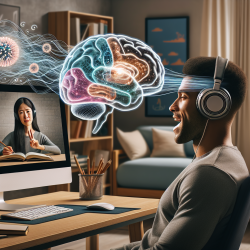Introduction
As practitioners dedicated to fostering positive outcomes for children, it is crucial to stay informed about innovative approaches that can be integrated into our practice. One such approach is the Norwegian Healthy Body Image (HBI) program, a school-based intervention designed to promote positive body image and prevent disordered eating among high school students. This blog post will delve into the key findings of this program and explore how practitioners can leverage these insights to enhance their skills and contribute to better outcomes for children.
Understanding the HBI Program
The HBI program is a comprehensive intervention that integrates health promotion and disease prevention strategies. It targets 12th-grade students and is structured around three interactive workshops focusing on body image, media literacy, and lifestyle. The program employs a mixed-methods design, utilizing both quantitative and qualitative data to assess its efficacy.
Key Findings and Implications for Practice
The HBI program demonstrated significant positive outcomes, including improved body image and reduced disordered eating behaviors among participants. These findings underscore the importance of integrating health promotion strategies into school curricula to address body dissatisfaction and disordered eating, which are prevalent risk factors for eating disorders.
- Promoting Positive Body Image: The program emphasizes the importance of fostering a positive body image, which is not merely the absence of a negative body image. Practitioners can incorporate strategies that focus on body appreciation, self-compassion, and acceptance of imperfection into their practice.
- Media Literacy: Enhancing media literacy is crucial in combating the internalization of unhealthy body ideals. Practitioners can educate students on critically evaluating media content and recognizing the impact of social media on body image.
- Lifestyle Interventions: Encouraging healthy lifestyle choices, such as regular physical activity and balanced nutrition, can support positive body image and overall well-being. Practitioners can guide students in adopting healthier habits that promote both physical and mental health.
Encouraging Further Research
While the HBI program offers promising results, further research is needed to explore its long-term efficacy and applicability in diverse settings. Practitioners are encouraged to engage in ongoing research efforts to refine and expand upon these interventions, ensuring they remain effective and relevant in addressing the evolving needs of children and adolescents.
Conclusion
The Norwegian Healthy Body Image program provides valuable insights into promoting positive body image and preventing disordered eating among adolescents. By integrating these strategies into their practice, practitioners can contribute to healthier outcomes for children and support their overall development. To read the original research paper, please follow this link: The Norwegian healthy body image programme: study protocol for a randomized controlled school-based intervention to promote positive body image and prevent disordered eating among Norwegian high school students.










